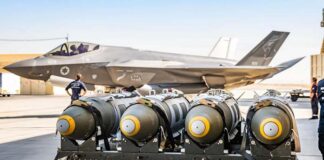THE US tried for 49 years to assassinate Fidel Castro and bring down his regime, which made his voluntary retirement as Cuban leader last month yet another act of defiance against Washington.
The man who led the Cuban revolution of 1959 and outlasted nine US presidents-and CIA plots involving exploding cigars-handed the presidency to his brother, Raoul.
The transition was made possible by two factors: the Communist Party’s tight control of Cuban society and the regime’s degree of popular legitimacy.
Fidel Castro’s 1950s guerilla army and 26 July Movement involved only hundreds, but the overthrow of the corrupt, US-backed government of General Fulgencio Batista had widespread support among Cubans.
Their victory made Cuba a beacon of hope and anti-imperialism for millions, especially in Latin America.
While richer western countries privatise and destroy public services, Cuba maintained its universal free healthcare and education system, which has produced doctors for the developing world, including East Timor.
Nonetheless, Castro’s retirement has sparked speculation about the direction and viability of Cuba’s government.
It also raises the question of Castro’s legacy-how far did he manage to change the face of Cuban society?
Green revolution
Cuba under Batista was little more than a US holiday resort, dominated by gambling and prostitution.
Many Cubans who wanted to free their country from humiliating foreign domination looked to the nationalist Ortodoxo party.
Castro was among the younger members who, frustrated by the lack of change, turned to radical tactics.
In 1953, he led an unsuccessful attack on the Moncada barracks in Santiago, Cuba’s second city. He was jailed, then exiled to Mexico.
There he met an Argentinian doctor called Ernesto “Che” Guevara, whose faith in gradual change had been undermined by a CIA-backed coup in Guatemala that overthrew the reformist Arbenz government in 1954.
They drew the conclusion that it was necessary to turn to arms and, in 1956, landed in Cuba with a few dozen men and took to the mountains.
By the end of 1958, Batista was isolated. Even the US abandoned him. As Castro’s forces came down from the mountains and circled the cities, they found that the army refused to fight and melted away.
On January 1, 1959, Batista fled the country. Castro’s troops entered the capital Havana in triumph.
There was mass popular support in Cuba for the rebel army and the new state structure it created.
But Castro saw Batista’s overthrow as a victory for nationalism and distanced himself from communism. He described the revolution as olive green (the colour of guerilla fatigues), not red.
The 26 July Movement was cautious, condemning land seizures and exercising tight control of trade unions.
It was government for the people, rather than government by the people. Political power remained in the hands of the 26 July Movement, with its tight discipline and hierarchical structures-a way of organising that reflected its roots as a clandestine military force.
While ordinary Cubans did not play much of a role in the 1959 revolution, the first years of Castro’s rule certainly brought significant gains-in healthcare, in literacy, in education and in cutting unemployment.
Switching orbits
Castro’s aim was national independence and development. But he quickly found that bucking US control in its own backyard came at a high cost.
The US government initially recognised the new Cuban regime. Vice-President Richard Nixon met Castro in Washington in April 1959.
While the US was not sorry to see Batista go, it quickly changed policy towards Cuba once it realised that the new government could not be relied upon to defend the interests of US capitalists.
It decided to turn the screw on Castro. US companies refused to refine oil for Cuba. They were taken over by the state, deepening US antagonism.
The CIA backed an invasion of Cuba at the Bay of Pigs in 1961, which was defeated in humiliating fashion. Popular support for the Castro government grew, but so did US pressure.
Economic boycotts by US firms became a full-scale government-imposed embargo, which has remained ever since.
Cuba’s economy, based heavily on the production of sugar, was not strong enough to withstand these pressures. Castro turned for support to the only significant counterweight to the US-the Russian empire.
Russia subsidised the Cuban economy by guaranteeing sugar purchases at favourable prices. But that support came at a cost.
On May 1, 1961-more than two years after the revolution-Castro declared Cuba a socialist state. He proclaimed himself a “Marxist-Leninist” that December.
Russia took advantage of its foothold in the American hemisphere, placing nuclear missiles in Cuba. In 1962, the US and Russia went to the brink of war before Moscow agreed to back down.
Serious debate about the direction and structure of the Cuban economy ended by the late 1960s. Plans for economic diversification were shelved, in favour of reliance on traditional exports-above all sugar. Cuba became a fully paid-up satellite of Russia.
All the paraphernalia of a Communist one-party state came with the package, including exclusive facilities and relatively high living standards for Communist Party leaders.
Meanwhile, Cuban troops fought as proxies for Russian interests in Angola and Ethiopia.
Cuba had come full circle, replacing dependence on the US with dependence on Russia and its satellites.
The Che inspiration
Castro’s aim was to liberate his country. Che Guevara had bigger internationalist objectives-to spread revolution throughout Latin America and beyond and to bring down capitalism and its product, imperialism.
Having tasted relatively easy success in Cuba in 1959, Che tried to use the same tactics elsewhere-first in the Congo, and then in Bolivia.
But Cuba had proven more of an exception than a rule. Batista was hated by the population, isolated from the military and abandoned by the US. It took only a small push to bring his regime down.
The formula could not simply be repeated. Che was forced to flee the Congo. He established a small guerilla group in Bolivia but, isolated in the jungle, he was captured in 1967 and executed.
In death, Che became a global revolutionary icon, inspiring a generation of new young radicals who were repelled by the grey conformity of Stalinist Russia.
This posed problems for Castro, who was moving deeper into the Russian camp.
Only months after Che’s death, Castro supported Russia’s invasion of its satellite, Czechoslovakia, where its tanks crushed a popular wave of dissent. In Cuba, the government downplayed Che.
All this changed after 1991, when the collapse of the Soviet Union deprived Cuba of its Russian subsidies. The Cuban economy shrank by 35 per cent.
It suited Castro to once again raise Che’s profile as Cuba entered a “special period”.
The New York Times reported in 1997 on “a Communist Party congress at which Guevara was repeatedly cited as an example of sacrifice and discipline”.
“All week long, Cuban television has broadcast interviews with his friends and associates, and songs praising his revolutionary qualities have blared continuously from radios and outdoor loudspeakers.”
But austerity was not enough to save the Cuban economy. Castro opened the doors to foreign investment and tourism, particularly from the European Union and Canada, which brought widespread prostitution in its wake.
A privileged few gained access to hard currency and the benefits of a black market. For many others, living standards fell.
As a symbol of his compliance, Castro welcomed the Pope in 1998 and declared his opposition to abortion-widely available in Cuba -as a form of birth control.
Cuba after Castro
Socialists today defend Cuba against US imperialism and call for the end of the blockade, but we should not have illusions in the allegedly socialist character of the country.
Cuba is part of the world capitalist system. Its brave attempt to break free of foreign domination in 1959 could not be sustained. It has relied in turn on Stalinist Russia, foreign tourists and subsidised Venezuelan oil.
Its progressive reforms are not an alternative for socialism “from below”, where the mass of ordinary people rise up and take their destinies into their own hands.
Despite the authoritarianism and inequality of Cuban life, most Cubans are proud that they have defied the US for so long.
But the regime has no easy way out. Once a revolution with mass popular backing, it became a stagnant hierarchy with authoritarian control.
Raoul Castro is said to support following China’s path-opening more to the market while retaining tight political control and a one-party state. Others around him favour creating closer links to Europe, or to Latin American economies such as Brazil or Argentina.
But Cuba is not China. It does not have the resources to become a major player in the world market.
Its people will be asked to make ever more sacrifices. Their national pride may make them accept this for a while. But Castro’s heirs will be wondering, for how much longer.
By David Glanz





